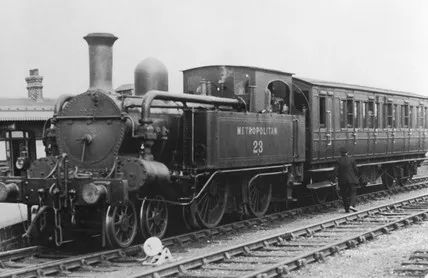
The

London Underground, also known as the Tube, is an essential part of daily life for many Londoners and visitors alike. With 11 lines and 270 stations, it is one of the busiest and most extensive metro systems in the world. However, beneath the familiar stations and crowded carriages lie some interesting and lesser-known facts about the London Underground.
The Tube was the world's first metro system.
When the Metropolitan Railway opened in 1863, it was the first underground railway in the world. Its success led to the expansion of the Underground, with other lines opening over the following decades. The first electric Underground line opened in 1890, replacing the steam trains that had previously operated.
The Tube was a refuge during WW2.
During the Second World War, the London Underground stations and tunnels served as shelters for Londoners seeking protection from the bombing raids. The government set up canteens and medical aid posts in the stations, and many people slept on the platforms. The Tube network also played a crucial role in evacuating children from the city.
The Tube has its own subculture.
The Underground has its own unique culture, with enthusiasts known as "tube geeks" or "tube buffs." These individuals have extensive knowledge of the Tube network, including routes, stations, and rolling stock. Many participate in "tube challenges," attempting to visit all the stations in the shortest time possible.
The Tube has its own ghost stories.
Like many old buildings and structures, the Underground has its share of ghost stories. One of the most famous is the ghost of a woman who haunts the station at Bank. According to legend, she appears at the end of the platform and walks through the walls. Another popular ghost story is that of the WWII air raid warden who is still seen patrolling the station at Kings Cross.
The Tube is home to its own wildlife.
Despite being located in the heart of the city, the Underground has a surprising amount of wildlife. Insects, rodents, and birds are all common inhabitants of the subway system. However, it is the mice that are the most prolific. It is estimated that there are over 100 million mice living in the Tube network.
The Tube has its own slang.
London Underground employees and regular commuters have developed their own unique vocabulary for the tube system. For example, "Mind the Gap" is a phrase heard throughout the system, warning passengers of the space between the platform and the train. "Oyster" refers to the smart card used to pay for travel on the Tube, while "the Northern line" is sometimes referred to as the "Misery line" due to its frequent delays.
The Tube is a popular filming location.
The London Underground has featured in numerous films and TV shows over the years. Some of the most famous scenes include the shootout in The Bourne Ultimatum, Bridget Jones's Diary’s famous fight scene, and Harry Potter’s journey to Hogwarts in the Philosopher's Stone.
In conclusion, the London Underground is a fascinating system with a rich history and culture. From its role in WWII to its unique subculture, the Tube has many interesting facts and quirks that are often overlooked. Whether you are a regular commuter or a curious visitor, taking a moment to appreciate these lesser-known aspects of the London Underground can enhance your experience of this iconic system.